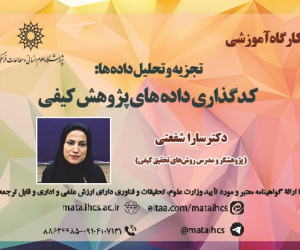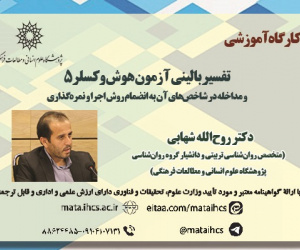تأثیر ذهن تورمی بر تورم ذهنی و پیش بینی تورم در ایران (۱۳۹۲–۱۴۰۲) (مقاله علمی وزارت علوم)
درجه علمی: نشریه علمی (وزارت علوم)
آرشیو
چکیده
این پژوهش با هدف بررسی تأثیر ذهن تورمی، یعنی مشغول بودن ذهن مردم نسبت به افزایش قیمت کالاها و به ویژه دارایی ها، بر تورم ذهنی یا همان انتظارات تورمی بر تورم در اقتصاد ایران انجام شده است. داده های مورد استفاده شامل برخی شاخص های تورم ذهنی منعکس شده در فضای مجازی به طور خاص، گوگل ترندز، و مجموعه ای از متغیرهای اقتصادی از فروردین ۱۳۹۲ تا اسفند ۱۴۰۲ است. این پژوهش یک مطالعه کاربردی است که با استفاده از روش توصیفی-تحلیلی و تحلیل همبستگی، به بررسی عوامل مؤثر بر نرخ تورم و پیش بینی آن با بهره گیری از الگوریتم های یادگیری ماشین با استفاده از نرم افزار پایتون می پردازد. نتایج نشان می دهد که در تحلیل تک متغیره، دو برابر شدن تورم ذهنی بدون اعمال وقفه زمانی منجر به افزایش ۰.۹ واحدی در نرخ تورم شده است. همچنین، با اعمال وقفه سه ماهه، این متغیر موجب افزایش ۴ واحدی نرخ تورم گردید. این یافته نشان می دهد که اثر تورم ذهنی نه تنها فوری است، بلکه در طول زمان تقویت می شود. در تحلیل چندمتغیره، تأثیر ذهن تورمی در مقایسه با سایر متغیرها کاهش یافته، اما همچنان معنادار باقی مانده است. این امر نشان دهنده آن است که ذهن تورمی، در کنار سایر متغیرهای کلیدی اقتصادی مانند قیمت طلا، دلار و تولید ناخالص داخلی، ابزاری قدرتمند برای تحلیل و پیش بینی تورم به شمار می آید. از بین الگوریتم های پیشرفته یادگیری ماشین، الگوریتم درخت تصمیم بهترین عملکرد را در پیش بینی نرخ تورم ارائه کرده است. یافته های این پژوهش می تواند برای سیاست گذاران اقتصادی در مدیریت انتظارات تورمی و پیش بینی تحولات آتی نرخ تورم مفید باشد.The Impact of Inflationary Mindset on Inflation Expectations and Inflation Forecasting in Iran (2013–2024)
This research aims to examine the impact of inflationary mindset, which refers to the public's focus on rising prices of goods, especially assets, on inflationary expectations (or mental inflation) and its effect on inflation in the Iranian economy. The data used includes some indicators of mental inflation reflected in social media, specifically Google Trends, and a set of economic variables from March 2013 to March 2024. This is an applied study that uses descriptive-analytical methods and correlation analysis to investigate factors affecting inflation rates and predict them using machine learning algorithms in Python software. The results show that in the univariate analysis, a doubling of mental inflation without applying a time lag led to a 0.9-unit increase in the inflation rate. Additionally, with a three-month lag, this variable caused a 4-unit increase in the inflation rate. These findings suggest that the impact of mental inflation is not only immediate but also strengthens over time. In the multivariate analysis, the effect of inflationary mindset, compared to other variables, was reduced but still remained significant. This indicates that inflationary mindset, along with other key economic variables such as gold price, dollar exchange rate, and GDP, is a powerful tool for analyzing and predicting inflation. Among advanced machine learning algorithms, the decision tree algorithm performed best in forecasting inflation rates. The findings of this study can be useful for economic policymakers in managing inflation expectations and predicting future inflation trends.








